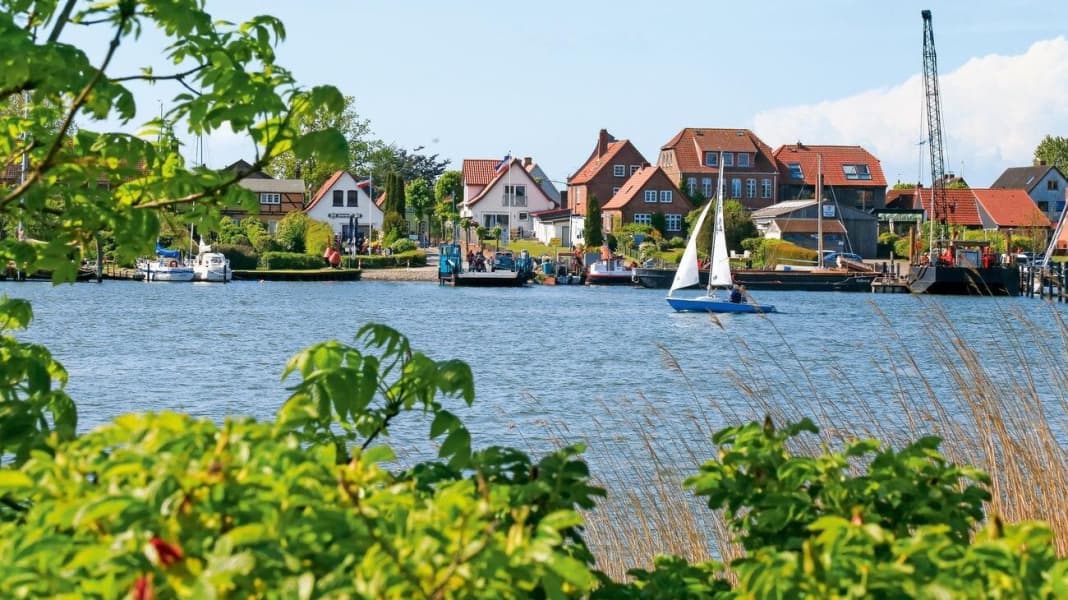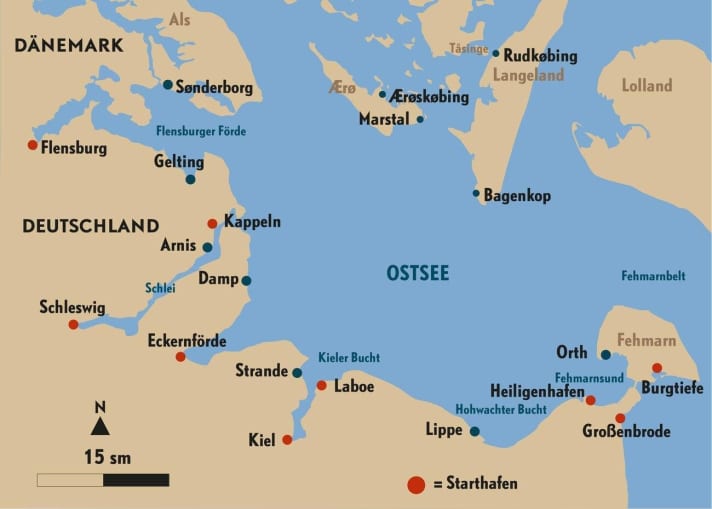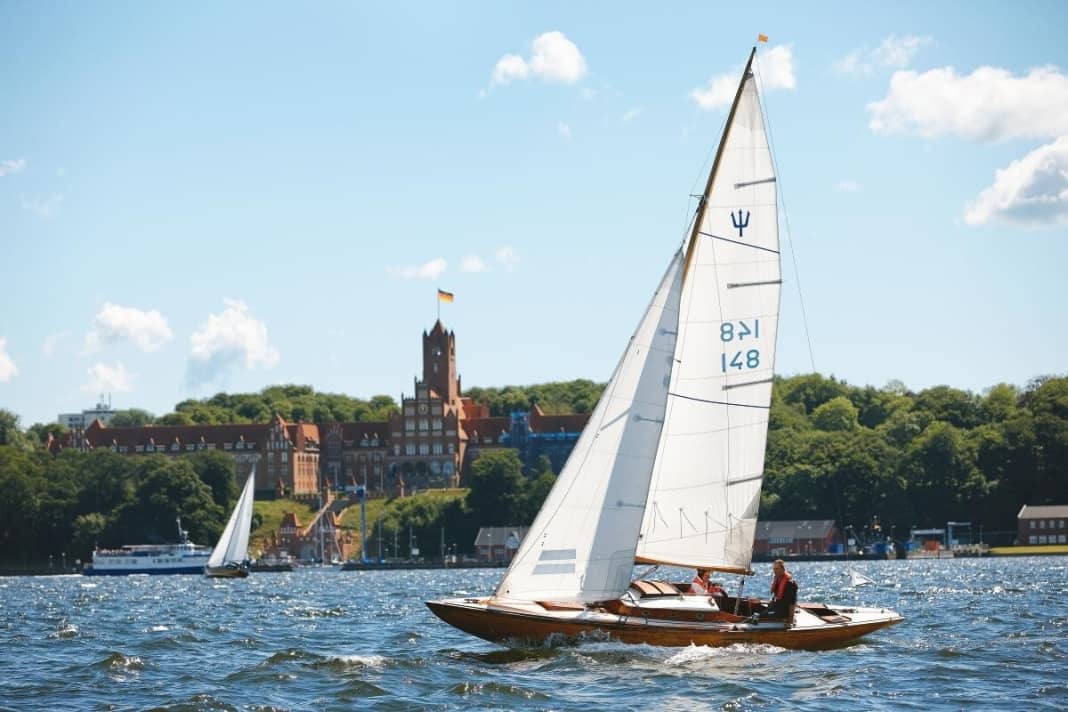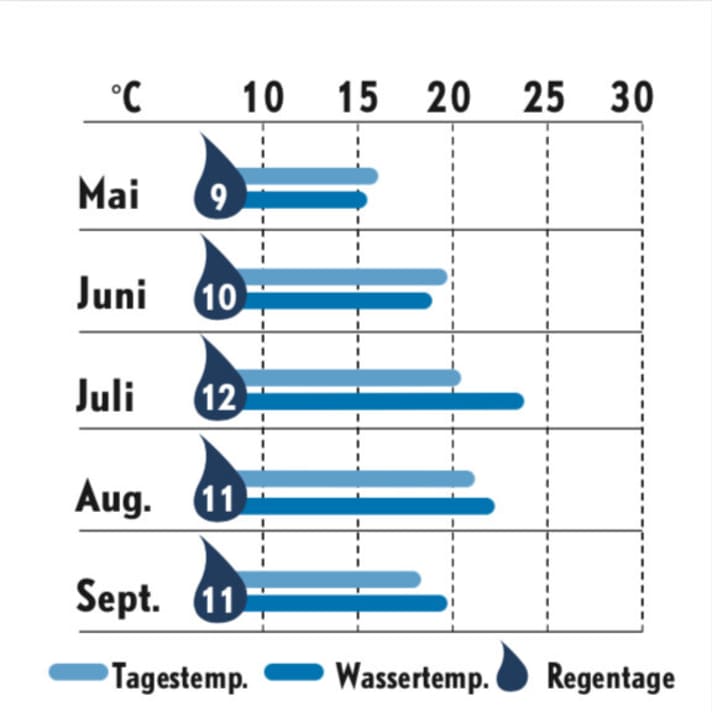
Journey

The areas off the German coast are of course ideal for travelling by car or train. Crews should only ask in advance where their cars will be parked. In some ports of departure, such as Heiligenhafen, the spaces around the harbour are short-term parking spaces; if you want to stay longer, you should find out in advance from the charter company where - if necessary - long-term parking spaces are available and how much they cost.






Charter
There are various charter options along the coast: Larger fleets are based in Flensburg, Eckernförde, Kiel, Laboe, Heiligenhafen, Großenbrode and Burgtiefe. If you are looking for other departure harbours, you will sometimes find what you are looking for with smaller providers. A peculiarity of the German coast is the so-called owner charter, which is somewhat more common here than in the Mediterranean. Another difference is that there are a number of companies active on the Baltic coast that do not offer their ships through traditional charter agencies, but instead market them directly themselves. These can be found at trade fairs, through adverts or on the Internet. In general, the price level for boats on the German coast is low. If you are used to weekly prices in the Mediterranean, you will be pleasantly surprised!

Wind & Weather
The German Baltic coast from Flensburg to Kiel is known for its unpredictable summers, even if super summers like 2018 have become more frequent in recent years. From April to the beginning of September, winds from the west dominate the scene, and sometimes longer from the east when the high pressure is stable. What they have in common is that there are often good sailing winds on the German coast - the long-term average for the summer is around 12 to 13 knots (4 Bft.). However, the Baltic Sea is also good for strong winds, keyword Atlantic low pressure systems. They can bring strong winds or stormy days even in summer, with a handful per month on a fairly regular basis. They also bring heavy rain. In recent years, however, there have also been surprisingly long, very dry phases, a side effect of the climate change.
The fact is that anyone travelling on the Baltic Sea has to be prepared for a few days of bad weather, even at the height of summer, and of course has to have full oilskins and boots with them.
Navigation & Seamanship
The coast is not too complicated to navigate, various shallows and reefs as well as fairways are well emphasised, and the charts from the German providers are among the best in the world in terms of detail and updates. For sailors who have never sailed along the German coast before, the shallow visibility in summer, when the algae are in bloom, is a surprise. While in the Mediterranean you can often see the bottom crystal clear even at eight or ten metres, in the Baltic Sea it often stops at one to two, at most three metres. The steep, short Baltic Sea waves also take some getting used to for rookies. Due to the often relatively shallow water depths, it forms in strong winds and makes for rather short, choppy boat movements compared to the Mediterranean.
Current and water level fluctuations in the Baltic Sea are primarily a wind phenomenon: strong westerly or easterly winds can sometimes lead to stronger currents and high or low tides in narrow passages, possibly amounting to more than a metre. Such phenomena can occur in the Schlei, approaches to harbours or at famous landmarks such as the "mother-in-law" off Glücksburg on the fjord. The phenomena are much stronger for crews travelling to Denmark, for example in Svendborgund or Alsensund.
Crews must be aware of the large military firing range in Hohwacht Bay between Kiel Fjord and Fehmarn. Exercises are also frequently held in the summer and must be avoided over a wide area. The shooting times are regularly published via the federal government's Elwis area information system (www.elwis.de) and are displayed in many harbours.
Anyone travelling on the Schlei has to deal with the nature conservation regulations there, the sometimes narrow fairways and the movable bridges in Kappeln and Lindaunis. Some harbours in the area have to contend with regular silting in the basins and approaches (e.g. Wentdorf, Lippe, etc.). It is therefore essential to be travelling with up-to-date maps
Harbours and anchorages
The harbour network on this part of the German Baltic coast leaves little to be desired, except along the Hohwachter Bucht. Otherwise, there is an excellent mix of attractive city harbours such as Flensburg, Kappeln, Eckernförde, Kiel (Schilksee) and Heiligenhafen. There are also other smaller harbours that have many fans, such as Arnis, Glücksburg and Laboe. The offer is rounded off by many club harbours, which are often quiet and in beautiful natural surroundings. However, the infrastructure is sometimes somewhat simpler.
In the other harbours, the standard has been good and rising for years, sanitary facilities have been modernised in many places and the harbours have become more attractive to tourists with more restaurants, bars, cafés, etc. Nevertheless, the coast has its peculiarities for newcomers to the area: Mooring is often done forwards, less often backwards in boxes, and the stern is tied to two poles. Charter crews sometimes misjudge the distance between the piles, which are designed for different boat lengths. In many places you can only access the showers and toilets with code cards, hot showers cost extra (tokens or money). The harbour fee is either paid at the harbour office or the harbour master makes a round of the harbour in the evening and early in the morning. The price level for a twelve-metre boat is a reasonable 20 to 25 euros.
LIterature & nautical charts
Cruising guide: Jan Werner: Ostseeküste Bd. 1, Delius Klasing, many good aerial photos! Harbour Guide Flensburg-Gdansk, Edition Maritim. If you buy a set of pleasure boat charts, you will also always receive a booklet with harbour plans, regardless of the provider.Nautical charts: Delius Klasing Set 1, Bay of Kiel around Funen, NV Publishing House Series 1, Round Funen Bay of Kiel, Series 2, Bay of Lübeck-Bornholm. The Card yard. Bay of Kiel and Little Belt. The chart sets usually differ in terms of the area sections, so skippers need to check which one suits their planned destination. All charts are also available as a digital version and as a bundle with a free app.
Territory characteristics
The western Baltic Sea has also been one of the top destinations for charter crews for years, as the journey is easy and inexpensive, just like the yachts and harbours. The area from Flensburg to Fehmarn is one of the most popular stretches of coastline, partly because the largest charter fleets are based here. However, the skippers do not necessarily set off on a cruise along the German coast: the majority of customers are drawn further north to Denmark, with the Danish South Sea often being the desired destination. Crews from Flensburg often sail towards Sonderburg on Alsen and on to Lyø. Crews starting from Heiligenhafen reach the popular Danish sailing area around Funen via Bagenkop or Marstall.
Nevertheless, the German coast offers more than enough attractive destinations for a holiday cruise. Firstly, there are the beautiful city harbours of Flensburg, Kappeln, Eckernförde and, of course, Kiel, all of which are centrally located and allow you to explore the interesting city centres. Then there are the smaller towns with nice harbours such as Arnis, Laboe and Heiligenhafen. The Flensburg Fjord and the Schlei are particularly idyllic and sheltered sailing areas. If you are not yet familiar with these two bodies of water, you should take a look around - the destinations are more than worthwhile. In spring, you can sail through gently rolling countryside with bright yellow rapeseed fields and some fantastic beaches. However, good anchorages are mainly to be found in the Schlei; in the Bay of Kiel and Eckernförde as well as the Flensburg Fjord, they are rather scarce.
The Schlei is particularly worth a detour: the quaint charm of the remote Schleimünde, the fishing village of Maasholm with the neighbouring Noor, then the now lively tourist town of Kappeln. Not to mention the picturesque Arnis. The water meanders like a river with reed beds and quaint piers towards Schleswig. If the wind blows strongly from the west or east, crews are perfectly protected here and can sail without any significant swell and significantly less wind than on the open Baltic Sea.
In terms of character, a trip further south to Eckernförde, which has become a real top destination on the Baltic Sea in the last five or six years, is somewhat different to Mecklenburg-Vorpommern, for example. Most crews sail from harbour to harbour, rarely anchoring. This also applies to the Kiel Fjord. Of course, it is also a worthwhile destination because of the many attractive sailing events: the largest regatta event in Germany, the Kieler Woche, or the German Classics in Laboe in August, which is attended by around 150 beautiful classic cars.

